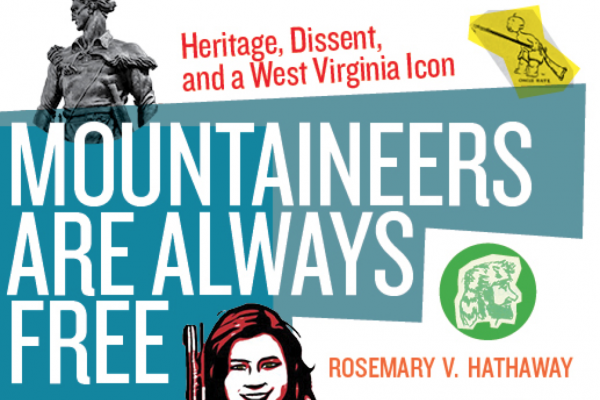Alumna, Dr. Hathaway, publishes Mountaineers are Always Free

Congratulations to CFS Alumna, Dr. Rosemary Hathaway (English Department at West Virginia University), who recently published her book, Mountaineers Are Always Free: Heritage, Dissent, and a West Virginia Icon (West Virginia University Press, 2020).
"The West Virginia University Mountaineer is not just a mascot: it is a symbol of West Virginia history and identity embraced throughout the state. In this deeply informed but accessible study, folklorist Rosemary Hathaway explores the figure’s early history as a backwoods trickster, its deployment in emerging mass media, and finally its long and sometimes conflicted career—beginning officially in 1937—as the symbol of West Virginia University.
Alternately a rabble-rouser and a romantic embodiment of the state’s history, the Mountaineer has been subject to ongoing reinterpretation while consistently conveying the value of independence. Hathaway’s account draws on multiple sources, including archival research, personal history, and interviews with former students who have portrayed the mascot, to explore the complex forces and tensions animating the Mountaineer figure. Often serving as a focus for white, masculinist, and Appalachian identities in particular, the Mountaineer that emerges from this study is something distinct from the hillbilly. Frontiersman and rebel both, the Mountaineer figure traditionally and energetically resists attempts (even those by the university) to tame or contain it." --WVU press summary
When CFS asked what else she thought we should know about her recent publication, Dr. Hathaway said, "I realized at some point in the writing process that I was essentially doing the same kind of work that I did for my dissertation! There, I looked at folk and popular accounts of the Shawnee leader Tecumseh to figure out why contemporary white folks were so invested in identifying with and retelling his story. The book essentially explores the same dynamics, just in a different place and through a different cultural figure (but still a 19th century figure associated with the “frontier”). I can’t tell you how many times during the writing I was grateful for my training in both folklore and literature at Ohio State—the methods and perspectives from both were essential."
